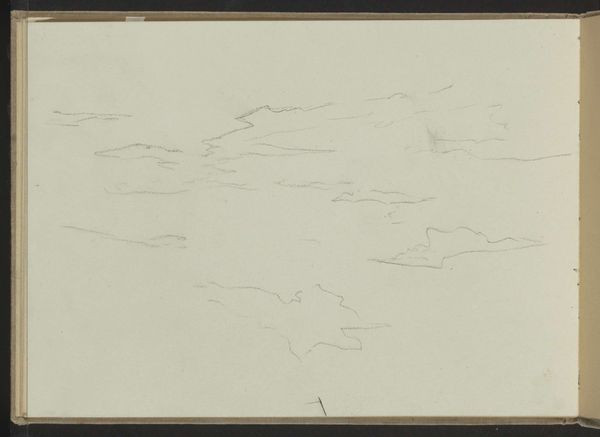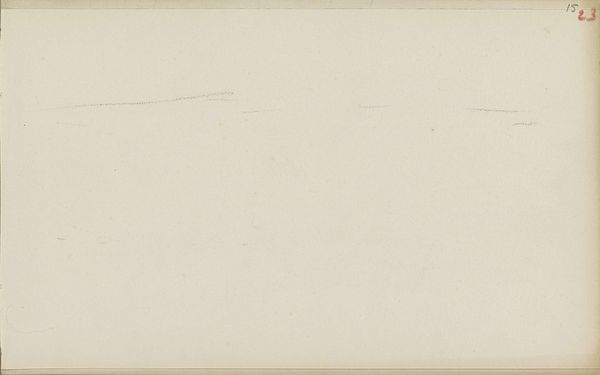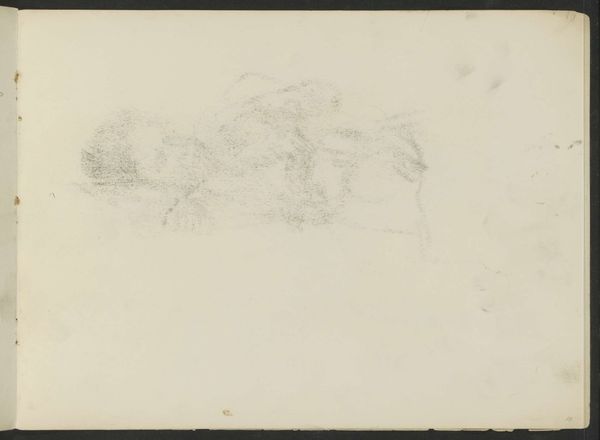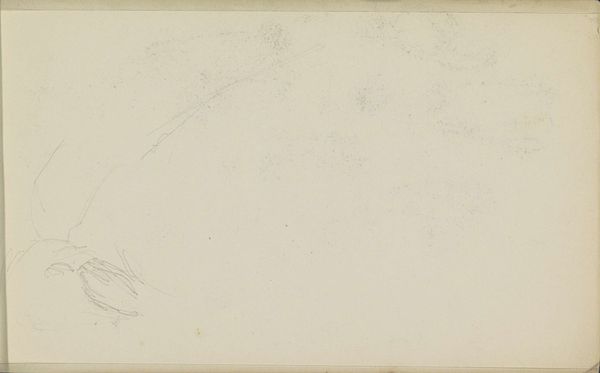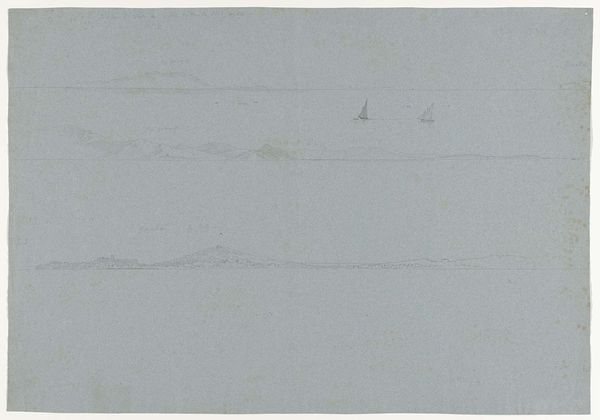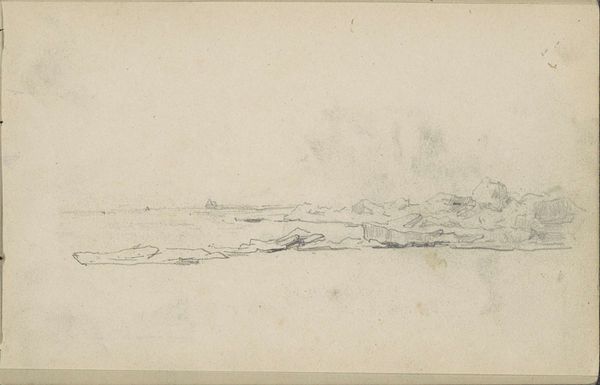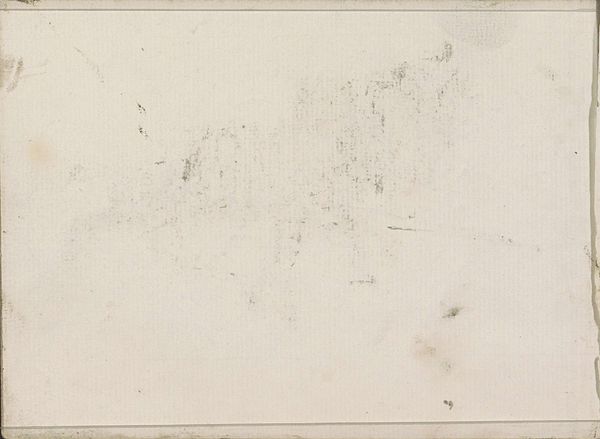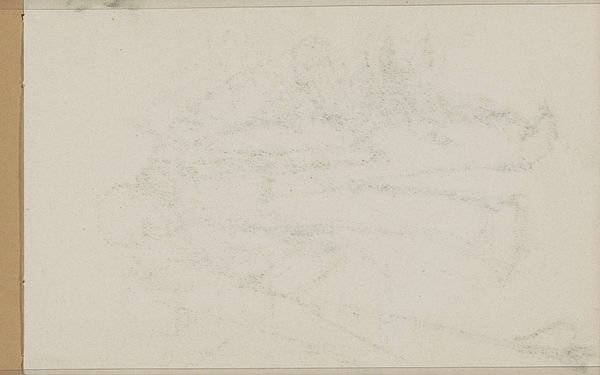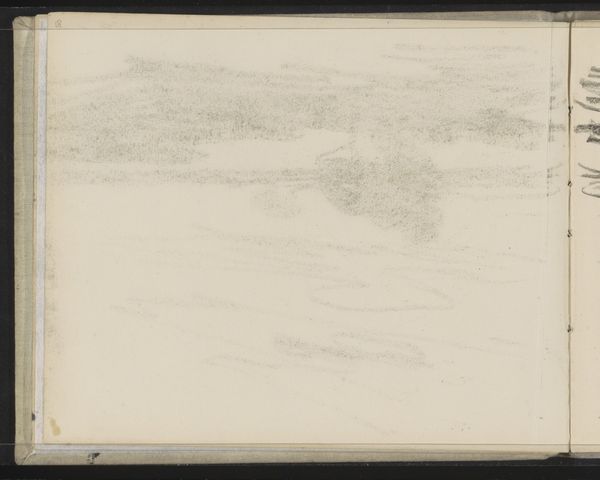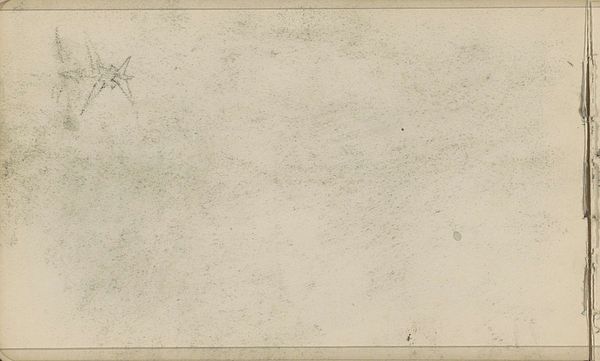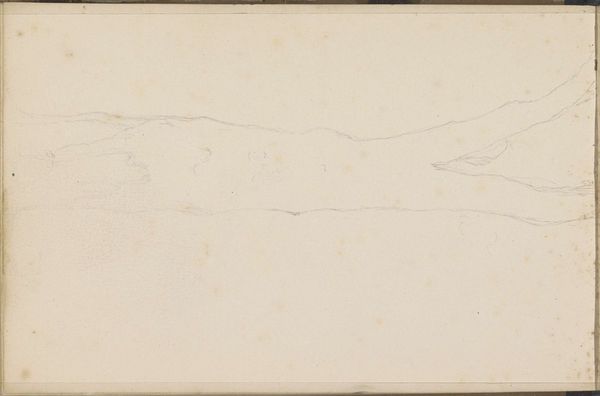
drawing, paper, pencil
#
drawing
#
pencil sketch
#
paper
#
abstract
#
pencil
Copyright: Rijks Museum: Open Domain
Editor: So, this piece is entitled "Abklatsch van de krijttekening op pagina 41 verso" – which translates roughly to "Impression of the chalk drawing on page 41 verso." It's attributed to Jozef Israëls and created sometime between 1834 and 1911, made with pencil on paper. It seems…almost accidental, very ephemeral. What catches your eye in this sketch? Curator: I find it intriguing precisely because it foregrounds process. As an 'abklatsch' – a transfer or impression – it makes visible the usually hidden act of reproduction inherent in drawing. The texture of the paper, the very faintness of the pencil marks: these point us towards the physical labour and the inherent limitations in artistic production. It also resists any clean divide between high art and the craft of replication. Editor: Interesting. So, instead of looking for a subject or meaning, you’re drawn to the making of the image itself? Curator: Exactly. Consider the social context, too. During Israëls’ time, there was increasing industrialization and new technologies for image reproduction. An ‘abklatsch’ like this, while seemingly simple, exists in relation to those larger forces shaping artistic production and consumption. What kind of labour went into creating this? What would the value be attributed to this drawing, compared to another that did not reveal such a process? Editor: That really reframes my perspective. I was focused on the sketch as a failed image but you're suggesting we should value the trace of labor and its relation to technology. Curator: Precisely. This sketch invites us to think about how art is made, disseminated, and ultimately, valued. It seems to push us toward acknowledging its inherent constructedness. Editor: I never would have looked at it this way on my own. It makes me think differently about how artists engaged with reproduction during a time of industrial change. Thank you! Curator: My pleasure. Hopefully, this has highlighted the value of interrogating the ‘how’ of art as much as the ‘what.’
Comments
No comments
Be the first to comment and join the conversation on the ultimate creative platform.


